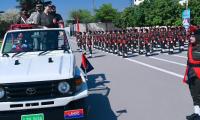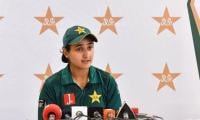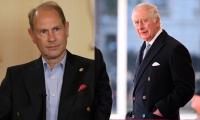Monetary policy meeting due this week
KARACHI: A set of key data released during the month showed a slight pick-up in consumer inflation and increased in private sector borrowing, but also weakness in export earnings and an overvalued rupee, a mixed bag that left analysts divided on whether interest rates will be cut this week.
The State Bank of Pakistan (SBP) is likely to keep the interest rates steady at its policy meeting and economists held firm to their expectations for a 100bps of tightening during the later reviews in the current fiscal year of 2016/17.
The current policy rate of 5.75 percent is hovering at historically low levels. The rate has seen a cumulative reduction of 425 basis points from 10 percent in October 2014. The central bank slashed its key policy rate by 75 basis points in the last fiscal year of 2015/16.
Hafiz Pasha, former finance minister, foresees no cut in the July-August monetary policy review.
“The central bank is unlikely to slash the policy rate at this moment and there are strong signs of status quo,” Pasha said. “Inflation has gradually started rising up and the high base effects could be seen in August.”
Annual inflation hit a 13-year low of 2.86 percent during the last fiscal year of 2015/16. However, in June, the consumer inflation inched up to 3.2 percent year-on-year.
Pasha said the credit to the private sector at Rs460 billion during the last fiscal year is relatively better than Rs223 billion, “but it’s still crowding out the credit to private sector.” “Businesses and consumers are also not in the mood to spend much money on their investments,” he added.
So far, lower rates have had a limited impact on cautious private sector borrowers who prefer watch and see at least till the crippling energy crisis persist.
But the government is a major beneficiary of low interest rate scenario, and borrowed heavily from the banks to finance its fiscal deficit. It borrowed Rs1.36 trillion from banks in the last fiscal year.
Analysts said the easing cycle that began in November 2014 amid a sharp drop in global crude oil prices had bottomed.
“Our base case still assumes that the rates will remain unchanged at the next MPC (monetary policy committee) meeting,” said Bilal Khan, economist at Standard Chartered Bank. “Still we cannot rule out a 25 basis points cut.”
Khan said the central bank’s assessment of the broader macro outlook also appears benign, with rising non-oil imports, “which we see as a risk given our expectations of a further rebound in global crude prices attributed to machinery imports for energy projects.”
Overall, exports dipped 12.11 percent in the fiscal year ended June 30, while imports dropped 2.32 percent, leaving the country with a trade deficit of $23.963 billion.
The pullback in export earnings has led key textile sector to struggle on its spending plans. Textile exports, which fetch more than half of the export revenue, decreased 7.42 percent to $12.455 billion. From cotton yarn and cotton cloth to knitwear and bed wear, the exports revenue from all the major foreign exchange spinners continued to drop during the last fiscal year.
Policymakers are trying to stimulate other sectors of the economy, particularly home building and infrastructure development, to make up for the pullback in textile spending.
Khan said the current account deficit for FY16 is still near one percent of the GDP despite significantly lower oil prices and a pickup in the private credit means domestic demand needs “little further stimulus at this stage”.
“The MPC appears focused on the SBP’s parallel role of promoting growth, particularly as the International Monetary Fund’s loan program concludes in September,” he added.
Harald Finger, the IMF’s mission chief for Pakistan, recently told Bloomberg that rupee is overvalued by as much as 20 percent and is contributing to the country’s declining exports, along with low commodity prices, power outages and security concerns.
In this picture, the PCJCCI logo can be seen on September 1, 2022. — Facebook/Pakistan China Joint Chamber of...
A representational image of a US flag pictured alongside a street sign reading "Wall Street" in the New York city. —...
A security guard sits in front of a wall with signs and slogans at the operation building at the Pakistan Steel Mills ...
A worker cleans the entrance to the headquarters of Bank Indonesia, the nation's central bank, in Jakarta, Indonesia....
The MCB's logo is seen on a wall outside the bank's head office. — MCB websiteKARACHI: MCB Bank Limited on...
A foreign currency dealer counts US dollars at a shop in Karachi. — AFP/FileKARACHI: The rupee lost ground against...







